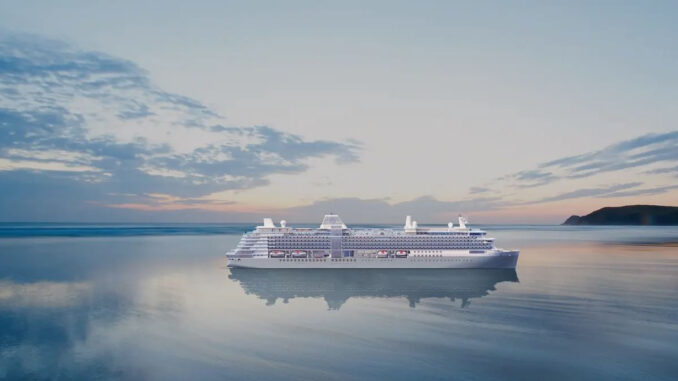
Silversea Cruises promises its new ship Silver Nova will be a revolution in ultra-luxury cruising. Construction has begun on the 728-guest ship that will offer among the most personal space and personalized services of any luxury ship.
The ship will also be at the forefront of sustainable cruising to come. When delivered in July, 2023, Silver Nova will be the first hybrid, luxury cruise ship free of local emissions at port, by using fuel cells and batteries.
Silver Nova and future Nova-class ships are the latest examples of Silversea’s ongoing efforts to offer travelers an ultra-luxurious experience while simultaneously protecting the treasured destinations it visits and the communities it serves, said Roberto Martinoli, President and CEO of Silversea Cruises at a ceremony to begin construction at Meyer Werft shipyard in Papenburg, Germany
“Sustainability is the future of luxury travel and the name Silver Nova is representative of the incredible innovation of Silversea’s luxury,” added Barbara Muckermann, Silversea’s chief commercial officer. “Silversea is already a leader in environmentally conscious travel and now, with Silver Nova, we will go even further to meet the expectations of both today’s and tomorrow’s luxury traveler.”

Silver Nova’s advances include:
1) Reduced carbon footprint in construction In partnership with Meyer Werft, Silver Nova is being designed and built to minimize the carbon footprint of ship construction,
2) Waste heat recovery system This allows the ship to use waste heat and absorption chillers to improve ship’s overall energy efficiency.
3) LNG (liquefied natural gas) engines A cleaner burning fuel, LNG-fueled propulsion systems emit less CO2 and 97 per cent fewer particulates than fuel oil typically used on ships.
4) Energy efficiency Hydrodynamically optimized hull and propulsion design allow more energy-efficient performance throughout ship’s operation.
5) Hydrogen Fuel Cells This hydrogen-based technology will supplement the main power supply and carry the ship’s total hotel load — up to four megawatts — the first large-scale fuel-cell installation at sea in the cruise industry.
6) Shore power This technology allows to shut down main generators, plug into the onshore energy supply and cut emissions to zero while in port.
7) Battery power A bank of batteries supports optimizing the overall ship power system, saving fuel.
8) Waste becomes energy A newly developed Micro Auto Gasification System reduces onboard waste volume, resulting in lower incineration emissions.





